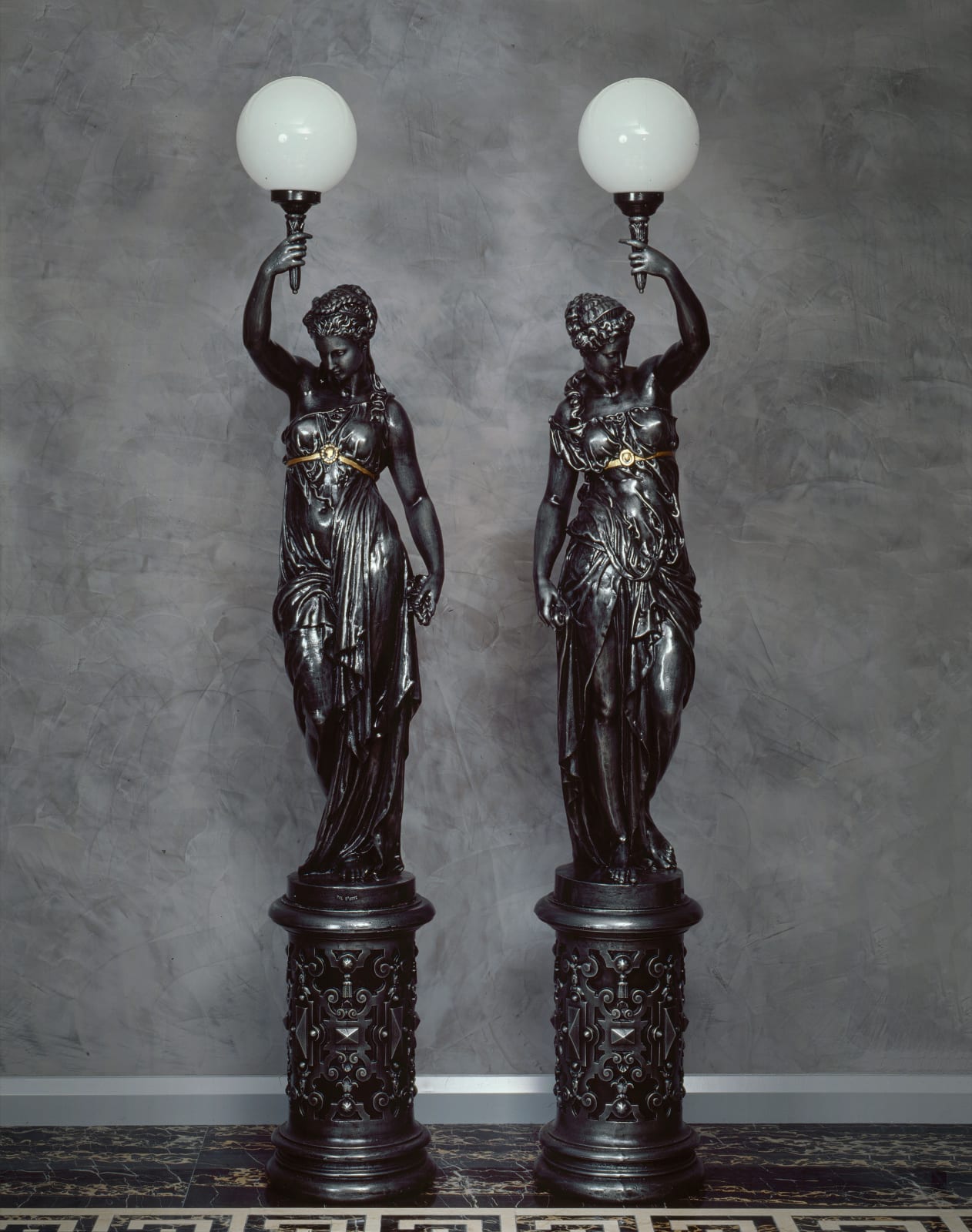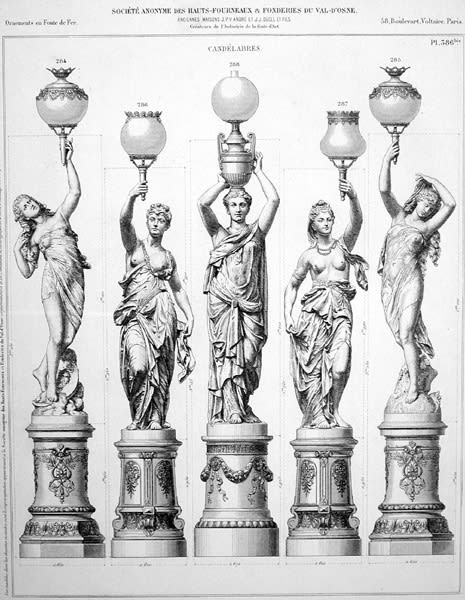Val D'Osne Foundry
Literature
"Société Anonyme des Hauts-Fourneaux & Founderies du Val d'Osne", Illustrated Catalogue, circa 1885, pl. 374, nos. 197 and 198, advertising these torchères.
A fine pair of French cast-iron figural torchères by the Val d'Osne Foundry, each stamped VAL D'OSNE, each cast as a classical maiden wearing a diaphanous robe, her head with coiled hair looking downward, with one arm held aloft holding a torch, standing on a cylindrical plinth
Val d'Osne, Haute-Marne, date circa 1880-85
Height 209.5 cm. each.
By the late nineteenth century, the Société Anonyme des Hauts-Fourneaux & Founderies du Val d'Osne, known as Val d'Osne was probably the biggest foundry in Europe, offering a wide range of products for both domestic and public use. The foundry in the Haute-Marne had by then capitalized on the prevailing vogue for classical garden ornaments, of which this pair of torchères is typical. The business began with J. P. Victor André who in 1835 established an iron works in the Val d'Osne, at first specializing in architectural items and then in ornate art castings, which proved cheaper and of a better quality than his competitors. In 1855, André's business was taken over by Barbezat & Cie, who proved equally successful. In 1867 Barbezat & Cie became Houille & Cie. Three years later it was restyled as the Société Anonyme des Hauts-Fourneaux & Founderies du Val d'Osne up until circa 1930 when it merged with a similarly large French iron foundry Antoine Durenne. Having changed hands in 1969, it is now known as G.H.M.
Val d'Osne offered a vast range of designs including garden seats, funerary furnishings, fountains, figural groups, architectural objects including spiral-staircases, candelabra and torchères, which could be selected from their lavishly illustrated catalogues. Some of the models were new while others were available during André's and then Barbezat's management. The foundry was able to increase its repertoire even further following the death of J. J. Ducel in 1878, when it purchased all the patterns from Ducel's large foundry at Pocé. The present models were advertised in the firm's illustrated catalogue circa 1885 but not in an earlier one of circa 1875. Given that Val d'Osne had just recently purchased all Ducel's patterns, it is possible that the design for the torchères originated from Ducel. A later catalogue of circa 1903 (pl. EZ) featured four female torchères, very similar to the present pair, two of which entitled 'Aurore' and Crépuscule' were after a model by Mathurin Moreau (1822-1912).
By 1885, the firm had a Paris showroom at Boulevard-Voltaire 58. In the later catalogue of circa 1903, they advertised an additional showroom at Richard-Lenoir 97 and also proudly announced that the firm had won 'diplomes d'honneur, grands prix and medailles d'or'. By the late 1800's Val d'Osne had become one of the most important manufacturers of cast-iron fountains, which were enjoyed throughout Europe. For instance, a number of those in Calabria and Abruzzo in Italy bear the foundry's distinctive stamp. The foundry also cast a number of statues after works by contemporary sculptors such as Alfred Jacquemart (1824-96). A Val d'Osne casting of his 'Valet de Limiers' portraying a groom with two bloodhounds stands at Anglesey Abby, Cambridgeshire.
They also offered casts after famous antiquities such as the 'Apollo Belvedere' as well as others after Michelangelo or Canova. The foundry's stand at the Chicago Exhibition of 1893 included a number of copies after original groups at Versailles such as one adapted from a lead group, known as 'L'Ile des Enfants' by J Hardy (1653-1737). An example of Val d'Osne's cast once at Lynford Hall, England and now in an American collection is outstanding and as here shows the quality of casting achieved by this prominent foundry.



